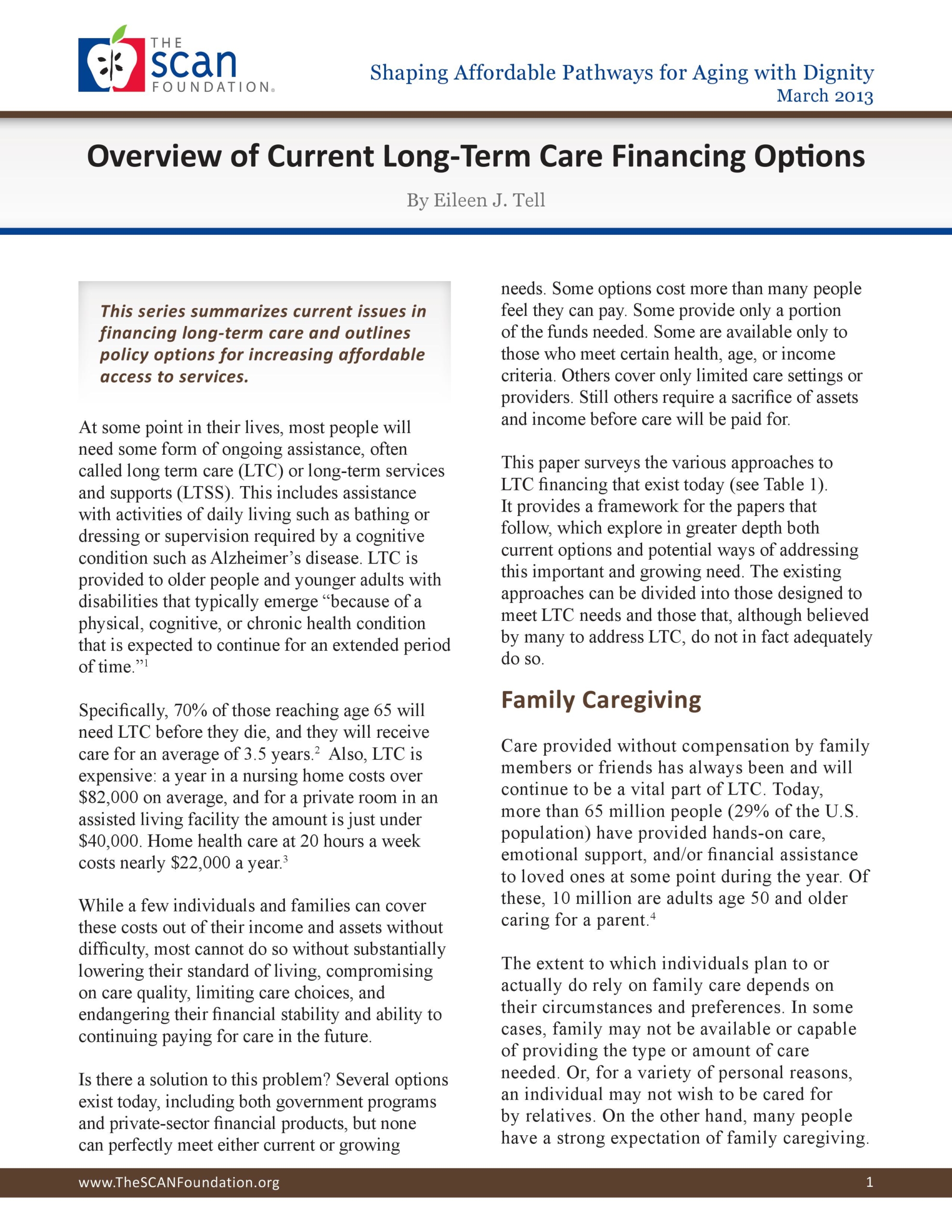Overview of Current Long-Term Care Financing Options
summary
The long-term care financing series summarizes current issues in financing long-term care and outlines policy options for increasing affordable access to services.
Date Updated: 03/20/2013At some point in their lives, most people will need some form of ongoing assistance, often called long term care (LTC) or long-term services and supports (LTSS). This includes assistance with activities of daily living such as bathing or dressing or supervision required by a cognitive condition such as Alzheimer’s disease. LTC is provided to older people and younger adults with disabilities that typically emerge “because of a physical, cognitive, or chronic health condition that is expected to continue for an extended period of time.”1
Specifically, 70% of those reaching age 65 will need LTC before they die, and they will receive care for an average of 3.5 years.2 Also, LTC is expensive: a year in a nursing home costs over $82,000 on average, and for a private room in an assisted living facility the amount is just under $40,000. Home health care at 20 hours a week costs nearly $22,000 a year.3
Download the publication for all visuals and complete references.
Continue Reading
This policy brief provides an introduction to The SCAN Foundation’s CLASS Technical Assistance Brief Series, which explores many of the critical issues to be considered for successfully implementing CLASS.
This policy brief describes the broad needs of individuals with disability and the wide range of supportive and environmental solutions that can allow for the most independent living possible. It suggests how findings on social and environmental supports for individuals with disability can inform implementation of CLASS.
This policy brief provides background on the historical development of benefit eligibility triggers in the private long-term care insurance market. Understanding how these triggers came into being can provide important information to those charged with implementing the CLASS Plan.


